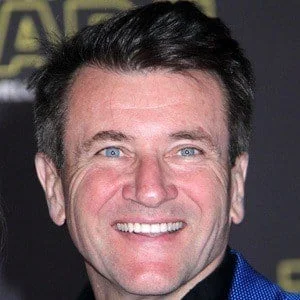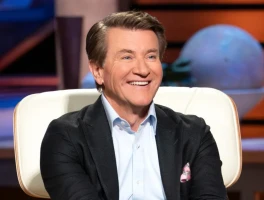There’s a significant disconnect in the public narrative of Robert Herjavec, and it’s one that warrants a closer look. On one hand, you have the television persona: the affable, risk-taking tech mogul on Shark Tank, a man who has built a brand on identifying and funding high-growth, often speculative, startups. On the other, you have the man who, when asked what he’d do with his “last million dollars,” gives an answer that sounds more like a retiree’s financial advisor than a venture capitalist.
Speaking to Grant Cardone at the high-octane 10X Growth Conference, an environment practically vibrating with calls for massive, aggressive action, Herjavec’s response was immediate and unequivocal: “I would invest in real estate” (Shark Tank Investor Robert Herjavec: Where I'd Put a Million).
His rationale was that “desperate people do stupid s–t,” and securing a foundational income stream removes that desperation. It’s sound advice, certainly. But it’s also profoundly out of sync with the 81 documented investments he’s made on a reality show built entirely on high-risk, high-reward bets. This isn’t just a simple preference; it’s a paradox. Why would an investor whose fame is predicated on backing volatile startups publicly advocate for the most traditional, least volatile asset class imaginable? Is this a genuine investment philosophy or a carefully constructed piece of personal branding?
The Barbell Strategy in Plain Sight
To understand Herjavec’s seemingly contradictory position, it helps to think of his financial life as a barbell. On one end of the barbell, you have the extreme risk: the Shark Tank deals. These are the flashy, asymmetric bets where a single success can pay for a dozen failures. We hear about these constantly. The breathalyzer company that took money from all the Sharks and imploded after the founder bought a luxury car is a perfect example of the downside. The public narrative, fueled by shows like Shark Tank, focuses almost exclusively on this high-risk, high-visibility end of the barbell.
Then there’s the other end, the one he spoke about with Cardone. This is the ultra-safe, even boring, weight: real estate. He says he’d take his "last million," get an income stream, and “forget it existed.” This isn’t a strategy for growth; it’s a strategy for survival. It’s the anchor. By securing a non-correlated, stable asset base, he creates a psychological and financial cushion that allows him to “go out and do other crazy stuff.” The public sees the crazy stuff; they don't see the boring foundation that makes it possible.
The numbers bear this out. While Herjavec’s public portfolio is a collection of high-beta ventures, real estate offers average appreciation of 6% to 9% annually, even before rental income. It’s a completely different risk profile. The discrepancy lies in the presentation. His advice is framed for an audience that likely doesn’t have a nine-figure net worth (his is estimated between $300 and $600 million, a rather wide and imprecise range for a public figure). For someone with an actual last million, locking it up in an illiquid asset and forgetting about it might not be the optimal path to rebuilding wealth. For Herjavec, it’s a hypothetical exercise in capital preservation, not accumulation.

I've analyzed countless executive interviews, and this pivot from high-risk reality TV to conservative asset allocation is a fascinating, if not jarring, piece of public relations. It's a masterclass in managing a public persona. He performs risk for the cameras but preaches safety to the crowd. But which one is the real Robert Herjavec? The data suggests they both are. The key is that one enables the other.
The Narrative as a Foundational Asset
The more you examine Herjavec, the clearer it becomes that his most valuable asset isn’t his tech company or his real estate portfolio; it’s his story. The data here isn't quantitative, but it's overwhelmingly powerful. His narrative is meticulously crafted and consistently reinforced, providing a different kind of foundation—one of public trust and relatability.
Consider the key pillars of his public story. First, the immigrant narrative. He frequently talks about his parents’ sacrifice, fleeing Croatia to give him a better life in Canada. The story of his father working grueling shifts at a factory serves as his "why," grounding his immense wealth in a universally understood story of hard work and gratitude. This isn't just a backstory; it's a strategic asset that inoculates him against the out-of-touch billionaire stereotype.
Then there’s the Dancing with the Stars chapter. It’s presented as a promise fulfilled to his mother, Katica, who was battling ovarian cancer (How Robert Herjavec’s Mother Inspired His ‘DWTS’ Story). This story transforms his participation from a celebrity vanity project into a touching act of filial devotion. It’s emotionally resonant and deeply humanizing. And, of course, it’s where he met his wife, Kym Johnson. The show didn't just give him a Mirrorball Trophy; it gave him a new family and a second act in the public eye, softening his corporate "Shark" image. He's made almost 100 deals on the show—or, to be more exact, 81 documented investments according to CB Insights—but his DWTS story likely generates just as much public goodwill.
This narrative foundation functions just like the real estate he champions. It’s stable, reliable, and generates consistent returns in the form of public affection and trust. It allows him to take risks in the business world because his personal brand is anchored in something safe and relatable. So when he advises putting your last million in real estate, he’s not just giving financial advice. He’s reinforcing his own brand as a prudent, grounded family man, even as his day job involves gambling on unproven ideas. The question is, how much of his investment success is tied to this carefully cultivated narrative? Does the story drive the deals, or do the deals legitimize the story?
The Real Foundation Is the Brand
Ultimately, Robert Herjavec's "last million" advice is less about a universal financial strategy and more about a personal branding statement. The real foundation he’s talking about isn't just a portfolio of income-producing properties; it's the carefully constructed narrative of a grateful son, a devoted husband, and a hardworking immigrant who hasn’t forgotten where he came from. That brand is the asset that allows him to operate in the high-stakes world of venture capital without alienating the mainstream audience that made him a household name. He’s not selling real estate; he’s selling stability, and he’s his own best customer.

